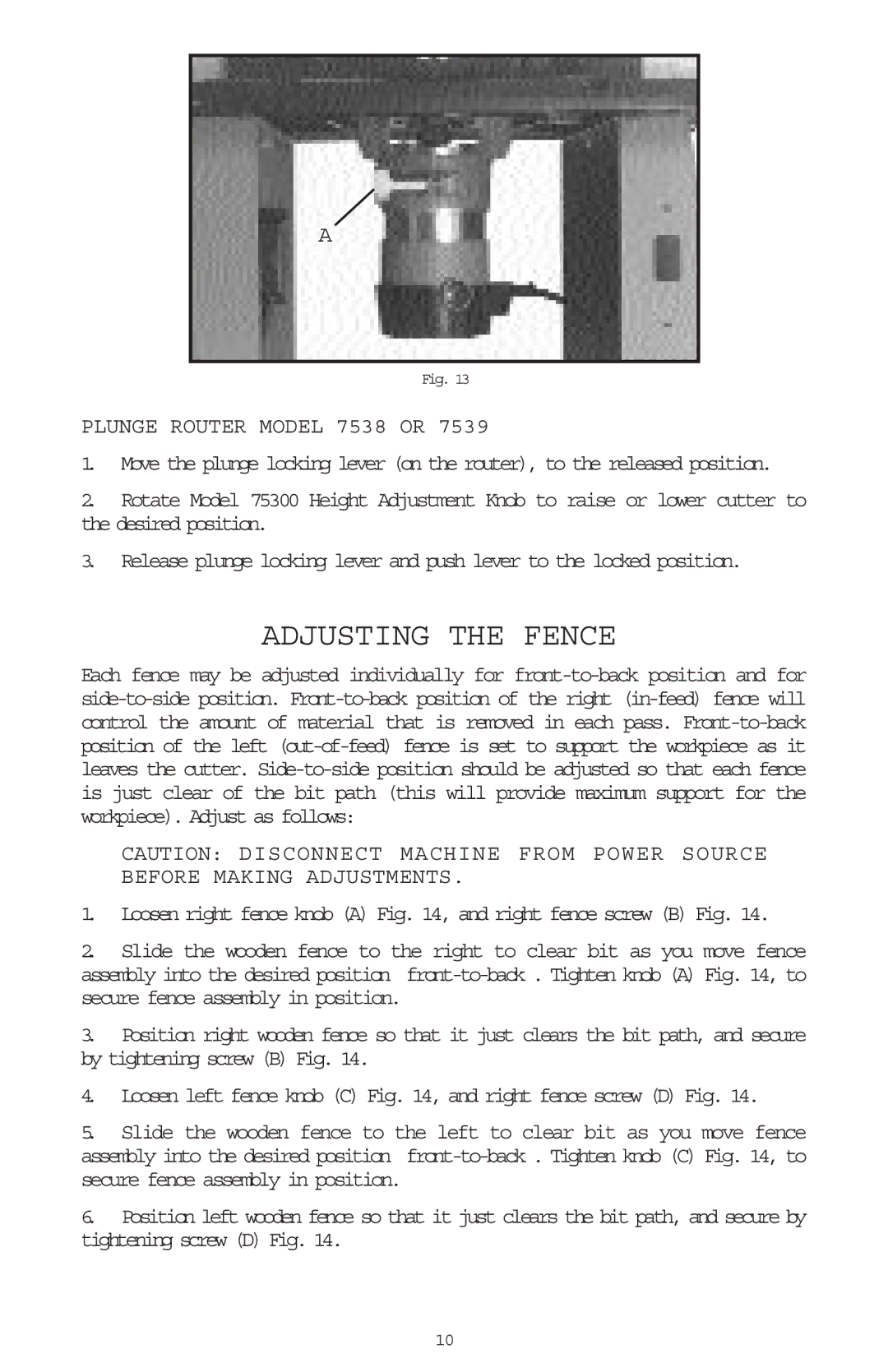
A
Fig. 13
PLUNGE ROUTER MODEL 7538 OR 7539
1.Move the plunge locking lever (on the router), to the released position.
2.Rotate Model 75300 Height Adjustment Knob to raise or lower cutter to the desired position.
3.Release plunge locking lever and push lever to the locked position.
ADJUSTING THE FENCE
Each fence may be adjusted individually for
CAUTION: DISCONNECT MACHINE FROM POWER SOURCE BEFORE MAKING ADJUSTMENTS.
1.Loosen right fence knob (A) Fig. 14, and right fence screw (B) Fig. 14.
2.Slide the wooden fence to the right to clear bit as you move fence assembly into the desired position
3.Position right wooden fence so that it just clears the bit path, and secure by tightening screw (B) Fig. 14.
4.Loosen left fence knob (C) Fig. 14, and right fence screw (D) Fig. 14.
5.Slide the wooden fence to the left to clear bit as you move fence assembly into the desired position
6.Position left wooden fence so that it just clears the bit path, and secure by tightening screw (D) Fig. 14.
10
